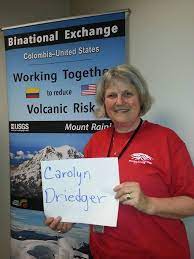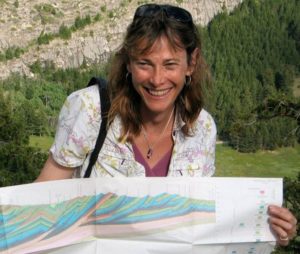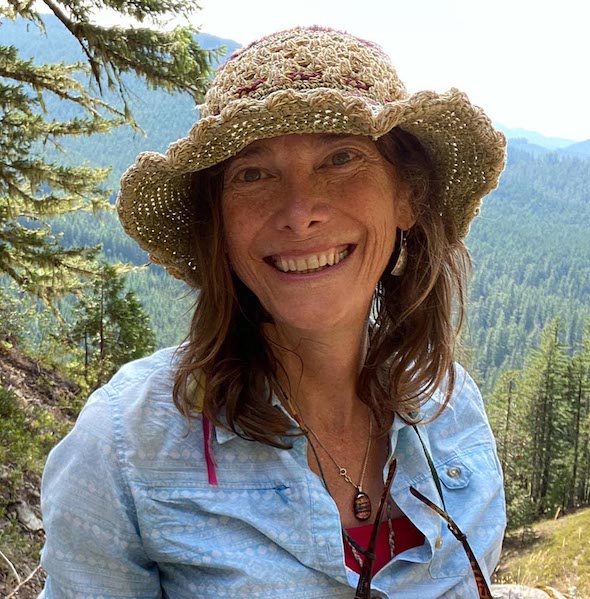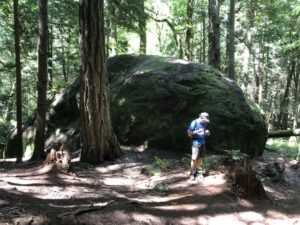
Geology of Tamanowas Rock and Peregrine’s Rock, Chimacum, WA
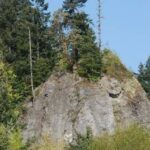
On Friday, July 8, 2022, five of our QGS geologists led a 4-mile, 4-hour hike to the Tamanowas Rock Sanctuary, then up on top of Tamanowas Ridge to see Peregrine’s Rock.
This 4-mile hike is vigorous, steep, and rough in parts and is tailored to agile citizen scientists who are already knowledgeable about geologic principles and vocabulary.
Subjects discussed on the field trip include the glacial history of the Quimper Peninsula (specifically Chimacum Valley), glacial erratics on the Peninsula, and the geology of the underlying Eocene volcanic rocks that form Tamanowas Rock. This feature is a special part of the story and a sacred place of the S’Kallum people.
Tamanowas Rock is the remnant of an explosive volcano that erupted about 43 million years ago. It is comprised of adakite, an unusual type of lava that forms under anomalously high temperatures when a subducted oceanic plate starts to melt.
Conversely, Peregrine Rock is a glacial erratic named by Eric Nagle, a participant in our Great Erratic Challenge two years ago. It currently is the largest erratic we have found on the Quimper Peninsula (see Great Erratic Challenge under Resources in the menu bar.

